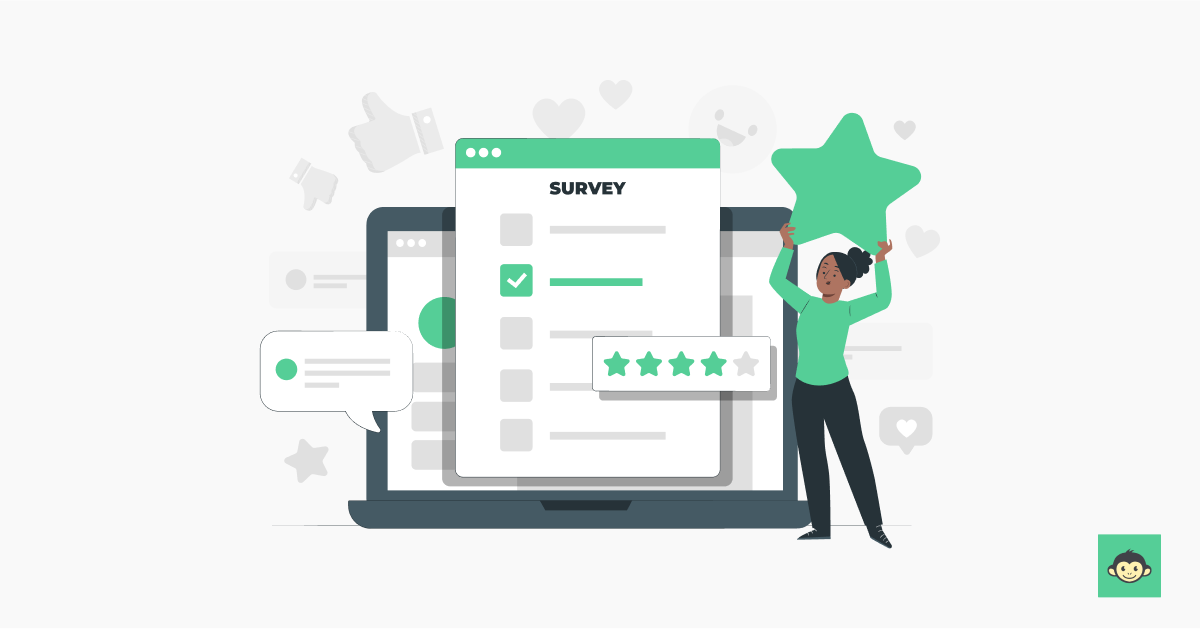What is organizational effectiveness: Key factors to achieve it as a leader in 2024

Imagine your organization as a high-powered rocket. It's got ambitious goals, a brilliant team, and enough fuel to reach the moon. But if the parts are mismatched, communication crackles like a dying walkie-talkie, and motivation is low-key MIA, well, that lunar launch is going nowhere fast.
This, my friends, is the importance of organizational effectiveness. It's the magic sauce that propels your rocket to stellar heights, ensuring it achieves its goals while keeping everyone on board happy and engaged.
In this blog, we'll blast off on a journey to understand what organizational effectiveness truly means. We'll break down the key factors that make your rocket, er, organization, tick. Finally, we'll equip you, the leader, with a roadmap to achieve peak organizational effectiveness models in the ever-evolving business landscape of 2024.
So, buckle up and get ready for a ride filled with valuable insights, a sprinkle of humor (because who says learning can't be fun?), and actionable tips to help your organization soar!
Organizational effectiveness meaning

Organizational effectiveness refers to the degree to which an organization meets its goals and operates efficiently. It encompasses various aspects, including the ability to achieve strategic objectives, optimize resources, and maintain a productive workforce.
A key component of organizational effectiveness is alignment, which ensures that the organization's vision, mission, and values are clearly defined and integrated into all levels of operations.
This alignment helps create a cohesive direction and purpose for a successful organization, enhancing its overall performance and success.
Another critical factor is the organizational culture, which shapes the behavior and attitudes of employees. A positive, inclusive culture fosters collaboration, innovation, and high morale, contributing to better performance outcomes.
Leadership also plays a pivotal role in driving organizational effectiveness by setting clear expectations, providing necessary resources, and fostering an environment of trust and accountability.
Effective communication channels are essential for organizational effectiveness. They ensure that information flows seamlessly across different departments, reducing misunderstandings and enabling quick decision-making.
Regular evaluation and feedback mechanisms are also vital, as they help identify areas for improvement and promptly implement necessary changes.
Ultimately, organizational effectiveness is about creating a dynamic and adaptable entity that can thrive in changing environments, achieve its objectives, and sustain long-term success.
Why does organizational effectiveness matter?

Organizational effectiveness is crucial because it directly impacts an organization’s ability to achieve its goals and maintain a serious competitive advantage or edge. Effective organizations can better align their resources, strategies, and processes to deliver high-quality products or services.
This alignment ensures that all parts of the organization are working towards common objectives, reducing inefficiencies and optimizing performance.
One of the primary reasons organizational effectiveness matters is its influence on financial performance. Efficient organizations utilize their resources judiciously, minimize waste, and streamline operations, which can lead to cost savings, organizational inefficiencies, and increased profitability.
Organizations that are effective in achieving their goals can attract and retain customers, build strong brand loyalty, and gain a market advantage.
Organizational effectiveness also significantly influences employee satisfaction and engagement. When an organization functions well, employees experience a clear sense of direction and purpose, which enhances job satisfaction and morale.
High levels of engagement lead to increased productivity, creativity, and a willingness to go above and beyond in their roles.
Organizational effectiveness fosters resilience and adaptability, enabling an organization to navigate challenges and seize opportunities in a dynamic business environment. It also supports sustainable growth, as effective organizations are better equipped to manage risks and respond to market changes.
In essence, organizational effectiveness is vital for ensuring long-term success, stability, and growth in a highly competitive landscape.
Organizational effectiveness vs organizational development

Organizational effectiveness and organizational development are closely related concepts, but they focus on different aspects of improving an organization.
Organizational effectiveness refers to the ability of an organization to achieve its goals and objectives efficiently and effectively. It involves optimizing resources, aligning strategies with goals, maintaining high performance, and ensuring that all parts of the organization work cohesively towards common objectives.
Key elements of organizational effectiveness include strategic alignment, leadership, culture, communication, and continuous improvement.
Organizational development (OD), on the other hand, is a systematic approach to improving an organization’s capacity to handle its internal and external functioning and relationships. OD focuses on planned change efforts that are designed to improve an organization’s health and effectiveness through interventions in its processes, structures, and culture.
This field leverages behavioral science knowledge and methodologies to facilitate improvements in areas such as team dynamics, leadership development, conflict resolution, change management, and organizational learning.
While organizational effectiveness is the end goal, organizational development provides the tools and processes to achieve that goal. OD interventions might include training programs, team-building activities, leadership development initiatives, and process reengineering.
These interventions aim to foster more efficient processes in adaptive, responsive, and high-performing organizations.
Organizational effectiveness approaches
Approaches to organizational effectiveness vary widely, focusing on different aspects of an organization’s structure, culture, and processes to achieve organizational effectiveness. Here are some key approaches:
- Goal attainment approach: This approach measures effectiveness based on the organization’s ability to achieve its stated goals and objectives. Success is defined by how well the organization meets its targets, whether they are financial, operational, or strategic.
- Systems resource approach: This method evaluates effectiveness based on the organization’s ability to acquire necessary resources from its environment and utilize them efficiently. It emphasizes the importance of inputs, processes, and outputs in achieving success.
- Internal process approach: This approach focuses on the efficiency and smoothness of internal operations. It examines factors such as internal communication, decision-making processes, employee morale, and workflow. Effective internal processes are seen as essential for overall organizational performance.
- Strategic constituencies approach: This perspective assesses effectiveness by how well the organization satisfies the demands and expectations of its various stakeholders, including employees, customers, investors, and the community. Success is determined by the organization’s ability to balance and fulfill these diverse interests.
- Competing values framework: This model identifies four major quadrants representing different types of organizational effectiveness: Clan (focused on collaboration and cohesion), Adhocracy (innovation and flexibility), Market (competitive positioning and productivity), and Hierarchy (stability and control). Organizations need to find a balance among these values to be effective.
What are the key factors in organizational effectiveness?

Key factors in organizational effectiveness encompass a range of elements that contribute to an organization's ability to achieve its goals and operate efficiently. Here are the main factors:
- Clear vision and mission: A well-defined vision and mission provide direction and purpose, guiding strategic planning and decision-making processes. They ensure that all members of the organization understand and align with the overarching goals.
- Leadership: Effective leadership is crucial for setting the tone, creating a positive organizational culture, and driving performance. Leaders must be able to inspire, motivate, and guide employees toward achieving organizational objectives.
- Organizational culture: A strong, positive culture fosters employee engagement, collaboration, and innovation. It creates an environment where values, behaviors, and expectations are clearly communicated and embraced by all members.
- Employee engagement and satisfaction: Engaged and satisfied employees are more productive, motivated, and committed to the organization’s success. Providing opportunities for growth, recognition, and a supportive work environment are key to maintaining high levels of engagement.
- Effective communication: Clear, open, and transparent communication ensures that information flows seamlessly across all levels of the organization. It helps prevent misunderstandings, aligns efforts, and facilitates collaboration.
- Strategic planning and execution: Having a robust strategic plan that outlines goals, strategies, and action plans is essential. Effective execution of this plan involves regularly monitoring progress, making adjustments as needed, and ensuring accountability.
- Resource management: Efficient utilization of resources, including financial, human, and technological assets, is vital. This involves budgeting, resource allocation, and leveraging tools such as asset management software to track, optimize, and ensure resources are used in ways that maximize value and support organizational goals.
- Adaptability and innovation: Organizations must be able to adapt to changing environments and market conditions. Encouraging innovation and flexibility allows an organization to stay competitive and responsive to new opportunities and challenges.
- Continuous learning and development: A commitment to continuous learning and development helps organizations stay ahead in a competitive environment. By investing in employee training and professional growth, organizations can enhance skills, improve performance, and ensure that their workforce is equipped to meet evolving challenges.
- Customer focus: Maintaining a strong focus on customer needs and satisfaction is essential for organizational effectiveness. Understanding customer preferences, delivering high-quality products or services, and actively seeking customer feedback contribute to building long-term relationships and ensuring business success.
Organizational effectiveness models
Organizational effectiveness models are frameworks used to assess and enhance an organization’s ability to achieve its goals and operate efficiently. These models provide structured approaches to understanding and improving various aspects of an organization. Here are 5 key models that contribute to organizational effectiveness:
1. McKinsey 7S Framework
McKinsey 7S Framework examines seven interdependent elements: Strategy, Structure, Systems, Shared Values, Style, Staff, and Skills. It emphasizes that all these elements must be aligned and mutually reinforcing for an organization to be effective. By analyzing these components, organizations can identify areas for improvement and ensure that their internal dynamics support their strategic goals.
2. Nadler-Tushman Congruence Model
Nadler-Tushman Congruence Model focuses on the alignment between an organization’s strategy, structure, culture, and work processes. It posits that higher congruence between these elements leads to better organizational performance. The model is particularly useful for diagnosing issues and making targeted changes to improve effectiveness.
3. Burke-Litwin Model
Burke-Litwin Model explores how external and internal factors influence organizational change and effectiveness. It identifies 12 key variables, including leadership, work unit climate, and external environment, and examines how they interact to impact organizational performance. The model helps organizations understand the broader context in which they operate and adapt accordingly.
4. Weisbord’s Six-Box Model
Weisbord’s model is a diagnostic tool that focuses on six key areas of organizational functioning: Purpose, Structure, Relationships, Rewards, Leadership, and Helpful Mechanisms. This model is particularly useful for identifying gaps or misalignments within these areas. By addressing issues in any of these boxes, organizations can improve overall effectiveness and ensure that all components work harmoniously toward achieving their goals.
5. The Competing Values Framework (CVF)
The CVF categorizes organizational effectiveness into four distinct models: Clan (collaborative), Adhocracy (innovative), Market (competitive), and Hierarchy (structured). Each model represents different priorities, such as flexibility versus control or internal focus versus external positioning. By understanding where an organization falls within this framework, leaders can make strategic adjustments to balance these competing values, enhancing overall effectiveness.
How can HR contribute to organizational effectiveness?

Human Resources (HR) plays a pivotal role in enhancing organizational effectiveness by strategically managing the workforce and fostering a productive work environment.
HR contributes by recruiting and retaining top talent, ensuring the organization has the right people with the right skills to achieve its goals. Through comprehensive onboarding programs, HR helps new employees integrate seamlessly, understanding the organization's culture and expectations from the outset.
HR drives employee engagement and satisfaction by implementing performance management systems, recognizing and rewarding high performance, and providing opportunities for professional growth and development.
By offering training and development programs, HR ensures that employees continuously enhance their skills and stay abreast of industry trends, contributing to the organization's adaptability and innovation.
HR also plays a critical role in shaping and maintaining organizational culture, promoting values such as inclusivity, collaboration, and ethical behavior. Effective communication channels established by HR facilitate transparency and alignment across all levels of the organization, reducing misunderstandings and fostering a sense of shared purpose.
HR ensures compliance with labor laws and regulations, mitigating risks that could otherwise disrupt operations. By implementing fair and consistent policies, HR creates a stable and supportive work environment.
HR’s strategic initiatives in talent management, culture building, and compliance significantly boost organizational effectiveness, enabling the organization to achieve its objectives efficiently and sustainably.
How do you measure organizational effectiveness?

Measuring organizational effectiveness involves assessing various aspects of an organization’s performance and its ability to achieve strategic objectives. Here are some key methods and metrics used to gauge organizational effectiveness:
- Key performance indicators (KPIs): KPIs are specific, quantifiable measures that track performance against strategic goals. Common KPIs include financial metrics like revenue growth, profitability, and return on investment (ROI), as well as operational metrics such as production efficiency, customer satisfaction, and market share.
- Employee engagement and satisfaction surveys: Regular surveys can gauge employee morale, engagement, and job satisfaction. High levels of engagement are often correlated with increased productivity, lower turnover, and better organizational performance.
- Customer satisfaction and feedback: Customer satisfaction surveys, Net Promoter Scores (NPS), and customer retention rates provide insights into how well the organization meets customer needs and expectations. Satisfied customers are a key indicator of organizational effectiveness.
- Financial performance metrics: These include revenue, profit margins, cash flow, and cost management. Strong financial performance indicates efficient resource utilization and effective operational strategies.
- Operational efficiency metrics: Metrics such as cycle time, error rates, and resource utilization rates help assess the efficiency of internal processes. Effective operations reduce costs and improve quality and delivery times.
- Innovation and learning metrics: These measure the organization’s ability to innovate and adapt. Examples include the number of new products or services developed, the rate of improvement in processes, and employee training and development participation rates.
What are organizational effectiveness assessments?
Organizational effectiveness assessments are systematic evaluations designed to measure how well an organization is achieving its goals and operating efficiently. These assessments provide a comprehensive analysis of various aspects of the organization, identifying strengths and areas for improvement.
Here are some key components and methods involved in organizational effectiveness assessments:
- Surveys and questionnaires: These tools gather feedback from employees, customers, and other stakeholders. They can cover a range of topics, such as job satisfaction, leadership effectiveness, organizational culture, and customer satisfaction. The data collected helps in understanding perceptions and experiences within the organization.
- Performance metrics analysis: This involves evaluating key performance indicators (KPIs) that align with the organization’s strategic goals. Metrics might include financial performance, operational efficiency, customer satisfaction, and employee productivity. Analyzing these metrics helps in quantifying the organization’s success and identifying trends.
- Balanced scorecard: The balanced scorecard approach evaluates organizational performance across four key areas: financial, customer, internal processes, and learning and growth. This holistic view helps in understanding how different parts of the organization contribute to overall effectiveness.
- SWOT analysis: SWOT (Strengths, Weaknesses, Opportunities, Threats) analysis helps organizations identify internal strengths and weaknesses, as well as external opportunities and threats. This strategic tool aids in planning and decision-making.
- Interviews and focus groups: Conducting interviews and focus groups with employees, managers, and other stakeholders provides qualitative insights into organizational dynamics. These discussions can reveal deeper issues related to culture, communication, and leadership.
- Benchmarking: Benchmarking involves comparing an organization’s processes, performance metrics, and practices with those of leading organizations in the same industry. This method helps identify gaps, set performance standards, and adopt best practices to enhance organizational effectiveness.
- 360-Degree feedback: This assessment method involves collecting feedback from various sources, including peers, subordinates, supervisors, and sometimes customers. 360-degree feedback provides a comprehensive view of an individual's performance and leadership qualities, contributing to the overall assessment of organizational effectiveness.
How to approach organizational effectiveness goals?

Approaching organizational effectiveness goals requires a structured and strategic approach. Start by defining clear and measurable objectives aligned with the organization's mission and strategic priorities.
Assess the current state of the organization across various dimensions, such as financial performance, operational efficiency, environmental impact, employee engagement, and customer satisfaction. Engage key stakeholders, including leadership, employees, and customers, in the goal-setting process to ensure alignment and commitment.
Prioritize goals based on strategic importance, feasibility, and potential impact. Develop detailed action plans outlining specific tasks, timelines, responsibilities, and resource requirements for achieving each goal.
Allocate resources effectively, ensuring adequate support for implementation. Implement initiatives according to the action plans, monitor progress regularly, and address any challenges or obstacles that arise.
Promote accountability and ownership among employees, holding them accountable for their roles in achieving organizational effectiveness goals. Continuously monitor and evaluate progress using key performance indicators (KPIs) and feedback mechanisms.
Celebrate successes along the way to keep employees motivated and engaged. Be flexible and adaptive, adjusting goals and strategies as needed based on changing circumstances and feedback.
Through a systematic and collaborative approach, organizations can effectively pursue and achieve their organizational effectiveness goals and shareholder value driving sustainable growth and success.
10 Organizational effectiveness examples to try

Here are ten organizational effectiveness examples that organizations can implement to improve their performance:
1. Implement lean principles
Lean principles focus on eliminating waste and optimizing processes to improve efficiency and quality. Organizations can adopt practices such as value stream mapping, 5S methodology, and continuous improvement to streamline operations, reduce costs, and enhance productivity.
2. Establish cross-functional teams
Creating cross-functional teams brings together employees from different departments or areas of expertise to collaborate on specific projects or initiatives. These teams encourage diverse perspectives, promote innovation, and foster better communication and coordination across the organization.
3. Develop leadership development programs
Investing in leadership development programs helps cultivate a pipeline of skilled and effective leaders within the organization. These programs provide training, coaching, and mentorship opportunities to develop leadership competencies, improve decision-making, and drive organizational success.
4. Implement flexible work arrangements
Offering flexible work arrangements, such as telecommuting, flexible hours, or compressed workweeks, can improve employee satisfaction, work-life balance, and productivity. Flexible work options also help attract and retain top talent and accommodate diverse employee needs.
5. Enhance employee recognition and rewards
Implementing effective employee recognition and rewards programs acknowledges and appreciates employees’ contributions, boosting morale, engagement, and motivation. Recognition can be in the form of verbal praise, awards, bonuses, or opportunities for advancement, reinforcing a culture of appreciation and performance excellence.
6. Adopt agile methodologies
Agile methodologies, such as Scrum or Kanban, emphasize flexibility, collaboration, and customer-focused development. By adopting Agile practices, organizations can improve project management, accelerate delivery, and better respond to changing customer needs and market conditions.
7. Promote a culture of innovation
Encouraging a culture of innovation involves creating an environment where employees feel empowered to share ideas, take risks, and experiment with new approaches. Organizations can establish innovation labs, hold regular brainstorming sessions, or implement idea management platforms to foster creativity and drive continuous improvement.
8. Enhance internal communication channels
Improving internal communication by adopting tools like intranets, collaboration platforms, or regular town hall meetings ensures that information is shared effectively across the organization. Clear communication channels help align teams, reduce misunderstandings, and improve overall organizational coherence.
9. Develop a strong onboarding process
A comprehensive and well-structured onboarding process helps new employees integrate quickly into the organization, understand their roles, and align with the company’s culture and values. Effective onboarding leads to higher employee retention, faster productivity, and stronger engagement.
10. Conduct regular organizational assessments
Performing regular assessments, such as employee engagement surveys or organizational effectiveness audits, helps organizations identify strengths and areas for improvement. Continuous assessment ensures that the organization remains aligned with its goals and can make timely adjustments to maintain or enhance effectiveness.
Significance of employee engagement software in establishing organizational effectiveness

Employee engagement software plays a significant role in establishing organizational effectiveness by facilitating communication, fostering collaboration, and providing insights into employee sentiment and performance.
These platforms serve as centralized hubs for communication, allowing organizations to disseminate information, updates, and company news efficiently.
By providing tools for instant messaging, video conferencing, and project collaboration, these platforms help break down silos and promote cross-functional collaboration, enhancing productivity and innovation.
Employee engagement software enables organizations to gather feedback from employees through surveys, polls, and feedback mechanisms. This feedback provides valuable insights into employee satisfaction, morale, and engagement levels, allowing organizations to identify areas for improvement and take proactive measures to address concerns.
By listening to and acting upon employee feedback, organizations can enhance employee experience, loyalty, and retention.
These platforms often include features for performance management, goal tracking, and recognition, enabling organizations to align employee goals with strategic objectives, track progress, and provide timely recognition and rewards for achievements.
By promoting transparency, accountability, and recognition, employee engagement software fosters a culture of continuous improvement and performance excellence.
Employee engagement software plays a crucial role in establishing organizational effectiveness by facilitating communication, collaboration, feedback, and recognition among employees.
By leveraging these platforms effectively, organizations can enhance employee engagement, satisfaction, and productivity, ultimately driving organizational success and competitiveness in today's dynamic business landscape.
Conclusion
Organizational effectiveness is essential for achieving strategic goals, maximizing performance, and maintaining competitiveness. By adopting a systematic approach to workforce planning, setting clear objectives, engaging stakeholders, and leveraging tools such as employee engagement software, organizations can enhance communication, collaboration, and employee satisfaction.
Through continuous monitoring, feedback, and improvement initiatives, organizations can drive sustainable growth, innovation, and success in today's rapidly evolving business environment.
FAQs
1. How to improve organizational effectiveness?
Improving organizational effectiveness involves setting clear goals, fostering strong leadership, and promoting a positive culture. Key strategies include enhancing communication, investing in employee development, and adopting data-driven decision-making. Emphasizing continuous learning, optimizing resource management, and encouraging innovation also contribute to better performance.
2. How does leadership impact organizational effectiveness?
Leadership impacts organizational effectiveness by setting the vision and tone, inspiring and motivating employees, and driving strategic initiatives. Effective leaders foster collaboration, guide decision-making, and maintain focus on goals. Strong leadership helps navigate challenges, adapt to change, and cultivate a productive, engaged workforce, ultimately enhancing the organization’s overall effectiveness and long-term success.
3. What role does employee engagement play in organizational effectiveness?
Employee engagement is crucial for organizational effectiveness as it boosts productivity, morale, and retention. Engaged employees are more committed, motivated, and aligned with the organization’s goals. High engagement leads to better performance, innovation, and collaboration, creating a positive work environment that drives success and sustains long-term growth.
4. What is the role of organizational culture in effectiveness?
Organizational culture shapes behaviors, attitudes, and values, directly impacting effectiveness. A strong, positive culture fosters engagement, collaboration, and innovation, aligning employees with the organization’s mission. It influences decision-making and communication, driving performance and productivity. A well-defined culture attracts talent, enhances satisfaction, and helps the organization adapt to changes, contributing to long-term success.
5. What are the benefits of benchmarking for organizational effectiveness?
Benchmarking enhances organizational effectiveness by identifying performance gaps and setting realistic goals. It provides insights into best practices, encouraging continuous improvement and the adoption of proven methods. Benchmarking informs decision-making, enhances competitiveness, and clarifies where the organization stands relative to peers, driving overall effectiveness and long-term success.



